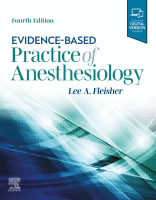Physical Address
304 North Cardinal St.
Dorchester Center, MA 02124

INTRODUCTION The contents of the cranium can be divided into three major constituents. The brain or tissue compartment accounts for approximately 85% of the total intracranial volume, cerebrospinal fluid (CSF) contributes approximately 10%, and the blood in the vasculature contributes…

INTRODUCTION The importance of excessive blood loss after coronary artery bypass grafting (CABG) is related to its significant association with deleterious perioperative outcomes, including all the risks of blood transfusion. Blood transfusion after CABG significantly increases mortality risk, ischemic morbidity…

INTRODUCTION Trauma is a major cause of morbidity and mortality worldwide and is the leading cause of death for individuals younger than 30 years of age in the United States. Perioperative and acute pain management for trauma victims can be…

INTRODUCTION Anesthesia and analgesia for hip surgery present a great challenge, especially considering the patient demographic, namely the elderly with significant comorbidities such as cardiac disease, pulmonary disease, and renal insufficiency. All of these conditions can adversely affect surgical outcome.…

INTRODUCTION Early recovery after surgery (ERAS) and the current opioid pandemic have made health care providers and patients consider regional anesthesia (RA) options, including neuraxial anesthesia and nerve/nerve plexus blocks, as alternatives to traditional opioids. RA has been shown to…

INTRODUCTION Many people use cyclooxygenase (COX)-1 and cyclooxygenase-2 (COX-2) inhibitors (nonsteroidal antiinflammatory drugs [NSAIDs]) on a regular basis. This is particularly true of the elderly, who are more prone to having osteoarthritis and rheumatoid diseases. The elderly are also more…

INTRODUCTION Three large prospective studies of the incidence of intraoperative awareness from Australia, Europe, and North America suggest that the overall rate is in the range of 0.1% to 0.2% or 1 to 2 per 1000 patients. Intraoperative awareness can…

INTRODUCTION Opioid-based anesthesia emerged as a safe and effective way to maintain hemodynamic stability in patients undergoing cardiac surgery in the early 1970s and used large doses (typically 0.5 mg/kg to 1.0 mg/kg) of long-acting opioids such as morphine. ,…

INTRODUCTION More than 500,000 people experience cardiac arrest in the United States each year, and approximately half of these occur in the hospital environment. Resuscitation attempts are unsuccessful in the majority of cardiac arrest victims, although as many as 30%…

INTRODUCTION Nitrous oxide is the venerable elder statesman of anesthesia. Its use has been characterized by peaks and troughs of enthusiasm and controversy from its first use to the present day. The first documented synthesis of nitrous oxide is generally…